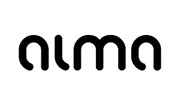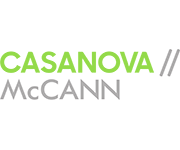Internet Wasn’t A Blip, The Recession Was: Report Defines A ‘New Media Order’.
July 22, 2005
It’s no surprise that the media industry has been undergoing an accelerated pace of change, but a leading chronicler of the industry’s economics Monday issued a report saying it has effectively reached a “new order” that shifts power to consumers from advertisers, and to new media from traditional media.
The changes, which began ten years ago with the emergence of the World Wide Web, and an explosion of online media, appeared to ebb along with the rest of the media industry following the U.S. economic recession of 2001, but fundamental shifts continued to manifest as both consumers and marketers began rethinking their relationship with traditional, passive, one-way media, concludes the 2005 edition of investment banker Veronis Suhler Stevenson’s annual Communications Industry Forecast.
The 2005 edition, which is the first to actually economically delineate “new” versus “traditional” media, estimates that new media accounted for 16.7 percent of all advertising spending last year–up from only 10.3 percent in the report’s baseline year, 1999. Ad spending in the new media–which VSS defines as cable and satellite television, satellite radio, business-to-business e-media, consumer Internet, movie screens, and video games–is growing at double-digit rates, while traditional media are rising only at single-digits. As a result, VSS projects that new media will account for 26.3 percent of all ad spending by 2009–an estimate some new media pundits might find conservative, given the rapid shifts in digital technologies. By 2007, Carat projects that 50 percent of all media will be digital, rising to 66 percent in 2010 and 80 percent by 2020.
Whatever the market shares ultimately prove to be, VSS says the forces driving change are clear: the expansion of digital media technologies, the shift toward consumer control of media–especially media supported primarily by consumer spending–and a shift toward greater ROI in marketing that is driving advertisers to use greater shares of new media.
During the advertising slowdown that followed the 2001 recession, for example, the VSS report finds that instead of “simply hunkering down and spending their limited media budgets on traditional advertising vehicles until the storm passed, marketers took a hard look at their media spending patterns, and decided that they needed stronger measurements of their return on investment (ROI) in advertising and marketing campaigns. This growing belief was only accentuated by the tough economic times that had befallen corporate America.”
The same forces drove consumers–especially families–to accelerate their “cocoon mode” and spend more time with non-advertising-based media such as home videos, video games, movies, and the Internet. Coupled with more media fragmentation and greater consumer empowerment via things like digital video recorders, consumers also seized control. “They can now completely skip ads delivered through one of the most powerful advertising tools on the planet: television,” concludes the report.
by Joe Mandese
Courtesy of http://www.mediapost.com
Joe Mandese is Editor of MediaPost.





























